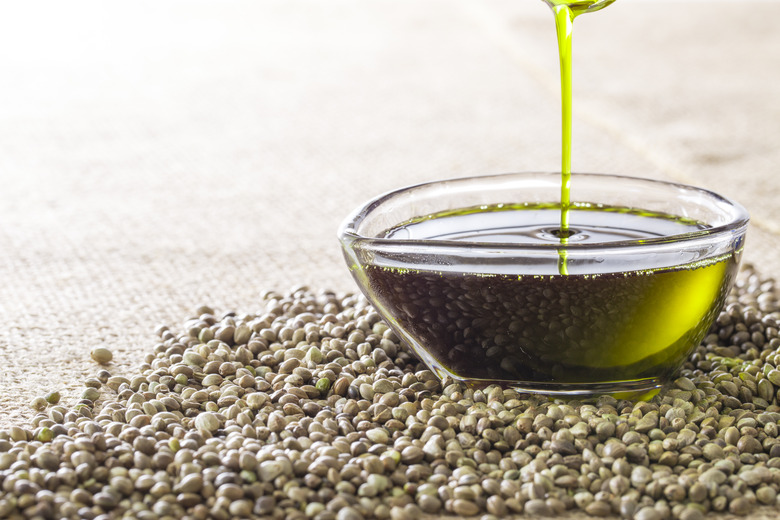What Elements Are Found In Lipids?
Lipids are large organic molecules or "macromolecules." Due to their association with dietary fat, lipids won't win many popularity contests. But lipids are important for more than growing waistlines. Lipids function in energy storage, cell membrane structure, protection of living surfaces and chemical signaling. Lipids are different from most other biological molecules in that they are hydrophobic, meaning that they don't dissolve in water. This property is why the salad oil in your refrigerator separates into an oil layer and a vinegar layer (vinegar is mostly water). The major types of lipids are fats, oils, waxes, steroids and phospholipids, which make up cell membranes.
The Facts
The Facts
The basic building block of all organic molecules is the carbon atom, which is present in all known forms of life. Carbon is unique in its ability to form large, diverse molecules like lipids. Like all organic molecules, a lipid consists of a carbon atom "skeleton" to which other molecules are attached. When glycerol (a type of alcohol) and fatty acids are attached to the carbon skeleton, a lipid is made.
Fats and Oils
Fats and Oils
Most people have heard that unsaturated fats are healthier than saturated fats, but how are these fats chemically different? The carbon atoms in lipids and other molecules can form a maximum of four bonds with other atoms, which is important for understanding the difference between saturated and unsaturated fats.
In a saturated fat, each carbon atom forms a single bond with hydrogen and other atoms in the molecule. This creates a fatty acid with a straight "tail," which allows many molecules to be packed tightly together in a relatively small space. This tight packing is why saturated fats, like lard or butter, are solid at room temperature.
In an unsaturated fat, some carbon atoms form double bonds with other atoms. These double bonds create a kink in the tail of the fatty acid, which means that the molecules can't pack tightly together. This is why an unsaturated fat, like olive oil, is liquid at room temperature.
Waxes
Waxes
Waxes are alcohol-based lipids that are extremely insoluble in water. If you've ever spilled your beverage on the wax paper wrapping of your sandwich, you've probably observed the way the liquid is repelled by the wax and forms beads. Because wax doesn't dissolve in water, it's very useful for forming protective layers around the external surfaces of plants, insects and other organisms.
Phospholipids
Phospholipids
Phospholipids are the molecules that make up cell membranes. Phospholipids have water-hating "tails" and water-loving "heads" so that they form a double layer that helps protects our cellular machinery from the outside world.
Steroids
Steroids
It may be a surprise that steroids are also lipids, because they share the property of being insoluble in water with other lipid molecules. Steroids include cholesterol and hormones like testosterone and estrogen. Hormones are chemical signals that regulate body function and development. Steroids are built from cholesterol molecules, which are rings made of carbon and hydrogen atoms. Cholesterol itself is vital to the functioning of cell membranes, as it is involved in the structure and permeability of those surfaces.
References
- Biology: Concepts and Connections
Cite This Article
MLA
Veloz, Liz. "What Elements Are Found In Lipids?" sciencing.com, https://www.sciencing.com/elements-found-lipids-2472/. 13 March 2018.
APA
Veloz, Liz. (2018, March 13). What Elements Are Found In Lipids?. sciencing.com. Retrieved from https://www.sciencing.com/elements-found-lipids-2472/
Chicago
Veloz, Liz. What Elements Are Found In Lipids? last modified March 24, 2022. https://www.sciencing.com/elements-found-lipids-2472/
